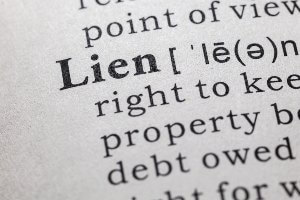How an Attorney Can Preserve Witness Testimony After a Crash in Minneapolis
Eyewitness testimony is just one type of evidence you can use to support a car crash claim, and it can be quite persuasive. Especially if the witness’s statements align with your account of the incident.
Considering how helpful this testimony could be, it is vital that you take steps to preserve it, as memories fade over time. In this article, we discuss the steps an attorney can take to preserve eyewitness testimony after a Minneapolis car crash.
If you were injured in a crash in Minnesota, we may be able to help you. Our licensed Minneapolis car accident lawyers have recovered millions for crash victims. In all, our firm has secured more than $1 billion for injury victims throughout the state.
We charge no upfront fees, and an initial legal consultation is free.
Complete a free case evaluation form or call us at (612) TSR-TIME.
How Witnesses Can Help Your Car Crash Claim
A witness may be able to back up an injury victim’s claim that another party was responsible for the car crash.
For example, maybe a witness saw the other driver staring at his or her smartphone in the moments before the collision. Witnesses might see the at-fault driver run through a red light, start making a turn when oncoming traffic is too close or follow the victim’s car too closely.
In cases where the victim suffers memory loss or is otherwise physically or medically unable to tell his or her side of the story, a witness can help explain what happened before and during the crash.
Car crash cases could be thought of as a competition between two drivers’ accounts of what happened. Witness testimony could help “break the tie” so to speak, especially if the witness has no connection to either party in the case, as this bolsters the witness’s credibility.
You also do not want a witness who has a documented history of lying or illegal activity, as this can call everything he or she says into question.
Witnesses can be particularly important if a case goes to court, as some witnesses may connect with the jury. This could make the jury more likely to rule in the victim’s favor.
It is important to note there are many pieces of evidence that may prove a car crash case. Lawyers often need multiple pieces of evidence. However, credible witness testimony that supports other evidence can be particularly powerful.
Definition of Preserving Witness Testimony
Preserving witness testimony could be defined as documenting the witness’s statements about the collision before he or she forgets. It is easy to forget details about a collision. In fact, it can happen rather quickly. In a matter of hours or days, witnesses might not recall vital details.
A witness also might not be available for the trial date. Preserving his or her testimony gives you the chance to present these statements later.
Examples of preserving witness testimony may include:
- Documenting the witness’s statements in the police report at the scene of the crash
- Recording the statement with a smartphone or other device
- Writing or typing the statement and having the witness sign it to make it official
What Can Crash Victims Do To Preserve Testimony?
It is generally best to allow your lawyer to obtain statements from witnesses. Your lawyer will know what questions to ask and how to properly document the witness’s account, such as:
- What were the traffic conditions?
- What was the weather?
- Did you see anything unusual about the other driver?
- Where were you when the crash occurred? What was your vantage point?
If you are able, we strongly suggest asking for witness contact information at the scene. You can then provide this information to your lawyer, so he or she can contact the witness.
Make sure to tell the police to talk to witnesses when they arrive at the scene. They can document witness statements in the police report.
What Steps Can Your Lawyer Take to Preserve Witness Testimony?
Your lawyer could ask the witness to provide a sworn statement. This means the witness would record or write out what he or she saw while under oath. The witness would sign the statement with a notary public in the room. The statement then becomes a legal document that can be sent to the court and put on record.
It is important to ask for a sworn statement as soon after the crash as possible. Otherwise, the witness could forget things that may help the victim’s case.
Your lawyer could also request a faster discovery if the witness is not available for trial, such as for health reasons. If the judge approves this request, your lawyer can have the witness do a deposition.
What is Discovery?
Discovery is a pre-trial process of exchanging evidence. This allows both sides to prepare for what will be presented at trial.
One aspect of discovery is getting depositions from witnesses. A deposition is an out-of-court statement, given under oath, by someone involved in the case.
A deposition can help your case in a couple ways:
- It may be used if a witness cannot appear at trial because they are physically unable to appear, out of the country or have safety concerns.
- Your lawyer can compare a deposition to in-court testimony to find any discrepancies that might call the witness’s statements into question.
Need Legal Help After a Crash? Contact TSR Injury Law to Discuss Your Case
Contact TSR Injury Law today to discuss your situation and learn how we may be able to help you gather the evidence you need for your case. We are committed to helping our clients secure the compensation they need to put their life back together.
Our lawyers operate on a contingency fee basis, so there are no upfront costs or legal obligations. Your initial legal consultation is also provided free of charge.
More than $1 billion recovered for injury victims. Call us at: (612) TSR-TIME.


 Many vehicles made in the past 10-15 years, and even some older ones, are equipped with event data recorders, also known as black boxes. These devices gather information about the vehicle and some of the driver’s actions leading up to a crash.
Many vehicles made in the past 10-15 years, and even some older ones, are equipped with event data recorders, also known as black boxes. These devices gather information about the vehicle and some of the driver’s actions leading up to a crash. Many injury victims are unsure about what to expect during the legal process. For instance, you may not realize that a hospital or health insurer can place a lien on your injury claim.
Many injury victims are unsure about what to expect during the legal process. For instance, you may not realize that a hospital or health insurer can place a lien on your injury claim.